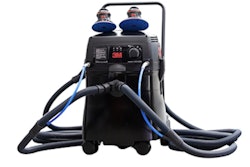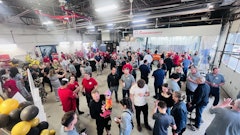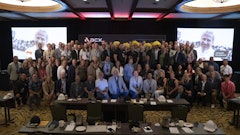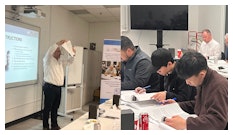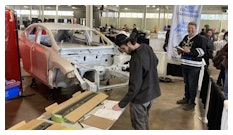
BY ALLISON ROGERS
Traditionally, the annual flip of the calendar marks a fresh start.
This could not be more welcomed as we leap into 2021.
At the outset of 2020, Collision Repair, using several business consolidation models, predicted that the industry was at the tail end of a consolidation storm. According to our interpretation, the industry was mere months away from entering a period of calm. Oh, how things change in the face of a global pandemic.
According to the recently released Romans Group whitepaper for the 2019 industry, Canada’s top 10 collision repair networks make up a whopping 76.1 percent of the industry’s revenue, despite only representing 31.9 percent of the sector’s repair facilities.
Now, with Mitchell and General Motors administering a new GM Canada Collision Repair network, the industry could become wrapped up in another phase of widespread change with an OEM carefully watching over the shoulders of Canada’s collision repairers. Of course, this won’t be the be-all and endall for Canada’s independents. However, it does mean those collision repair businesses will have to get on board with incoming changes if they want to match their franchisesigned competitors.
In every conversation I’ve had with shops from coast-to-coast, technician training and the massive influx of vehicle technology has been pointed out as the hot topic heading into 2021. Tom Bissonnette, director for the Saskatchewan Association of Automotive Repairers, put it best—there has been more change in vehicle technology in the last five years than the previous 30.
Keeping your tools and services current and keeping your technicians trained will be of chief importance in the years to come. If the government’s plan to turn Canada into an electric vehicle hub plays out as planned, we are mere years away from zero-emissions vehicles claiming a huge stake in collision repair facilities. Collision repairers will be destined to witness a myriad of new concepts; lightweight materials, working alongside high-voltage batteries, ever-increasing technology and so much more.
The road we’re facing won’t be easy— thankfully, this industry is as tight knit as they come. The collision repair sector has never been one to leave its peers high and dry. There is a plethora of resources available to facilities that feel they may in jeopardy. All you need to do is ask for help, whether it be from a supplier, a distributor, an industry consultant, a friend or even your pals over here at Collision Repair magazine.
If 2020 brought us anything, it was the reminder of how easily this industry can adapt to survive. In less than a month, the whole world was turned upside down; but even still, Canada’s collision repairers were able to hold strong, be named an essential service, and power through this pandemic. There are still countless changes ahead of us, even after the pandemic becomes nothing more than a fever-dream memory.
Luckily, we all know we can handle it— Canada’s collision repair community has demonstrated its resilience, and that will never go unrecognized.
Let’s cheers to the new year. It won’t be hard to make it better than the last



